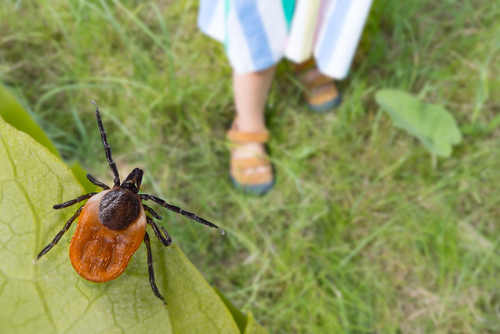
As we step into the tick season, it’s crucial to be aware of the potential health risks these tiny creatures pose. Ticks are not just bothersome pests; they can transmit Lyme disease, a condition that can lead to serious complications if left untreated.
Lyme disease, although rarely fatal, can develop into a severe condition causing inflammation in the brain and spinal cord. In rare instances, it can also lead to heart complications.
Medical professionals assure a full course of antibiotics should effectively clear the infection. However, the disease’s rarity doesn’t diminish its severity, with only about five recorded deaths in the U.S.
Fransicella tularensis is a zoonotic bacteria found primarily in the south-central United States. It is spread by contact with small mammals (rabbits, mice, and squirrels) or insect vectors (ticks or deer flies). The acute illness that develops, called tularemia (also known as… pic.twitter.com/TqTsyfvUiM
— Medbullets (@medbullets) October 2, 2023
Our furry friends are not immune to this threat either. Fortunately, several treatments are available to reduce their risk of a tick bite.
These include tick-repellant collars and chewable tablets that introduce a ‘poison’ into the pet’s skin, killing ticks shortly after they bite. This substance is harmless to the animal but lethal to ticks, reducing the risk of disease transmission.
Vaccines against Lyme disease are also available for pets, further reducing their risk. While our pets have vaccines, scientists are still working on similar preventative measures for humans. These potential solutions are currently undergoing clinical trials.
Ticks are most active up until the end of November, particularly in northern areas and wooded environments. High-risk activities during the fall include hunting and hiking, as ticks thrive in such surroundings.
Ticks often attach themselves to the crotch, thighs, or back, preferring sheltered crevices and places where clothing meets the body tightly.
🍂 Fall is here, but so are the deer ticks! Did you know that these tiny bloodsuckers have a two-year life cycle and can spread Lyme disease? 😱 Learn how to identify and avoid them in this article: 🙌 Stay safe and tick-free! 🙏https://t.co/IrErcov5WM
— Armed Forces Pest Management Board (@afpmb) October 5, 2023
To avoid tick bites, experts recommend avoiding woodland areas and wearing insect repellent. Pulling socks up over the bottom of your pants can also help, as it gives you extra time to spot a tick climbing up your body before it bites.
Long sleeves don’t offer much protection, as ticks are small and can slip underneath them.
If you’ve been outdoors, it’s crucial to perform a tick check on yourself, your kids, and your pets. This involves a thorough search of the body to spot if a tick has bitten. If bitten, remove the tick carefully with tweezers, ensuring no part of the tick is left in the body.
It’s also advised to keep the tick in a sealed jar for testing if symptoms develop later.
Lyme disease transmits after a tick has been biting for around 24 hours, meaning those caught earlier pose little risk of transferring the disease. The disease, caused by bacteria, is marked by large bulls-eye-like marks around the bite site.
It is treated with antibiotics and is diagnosed in nearly 500,000 Americans every year.











